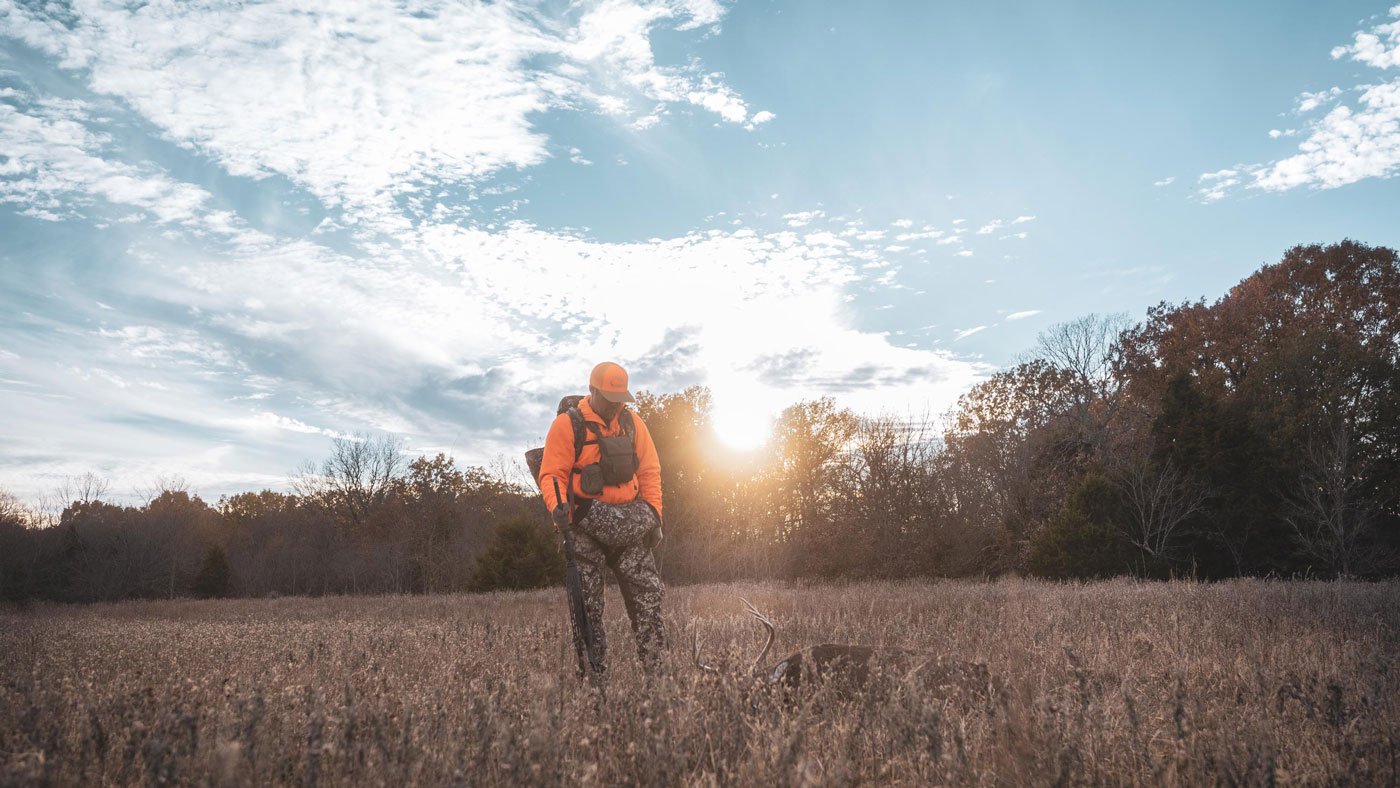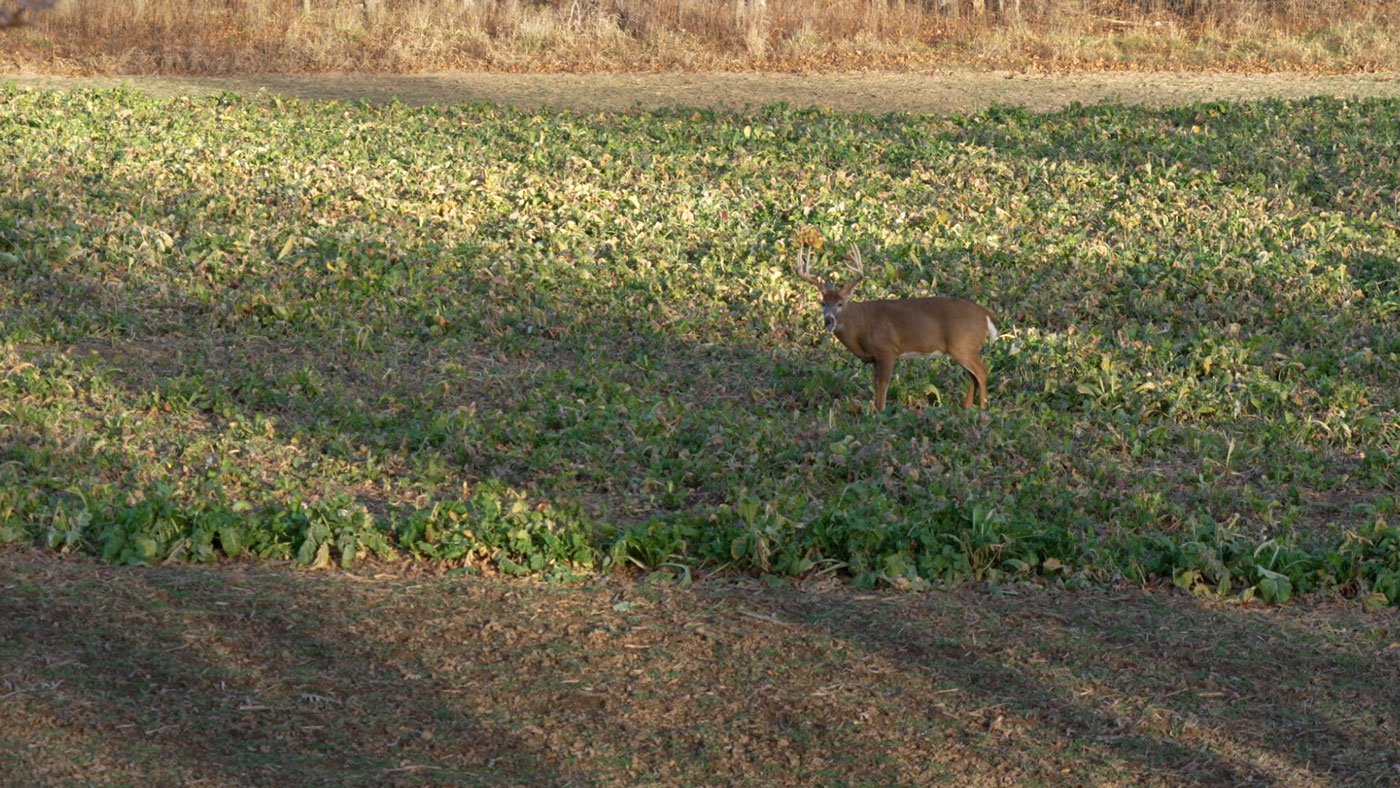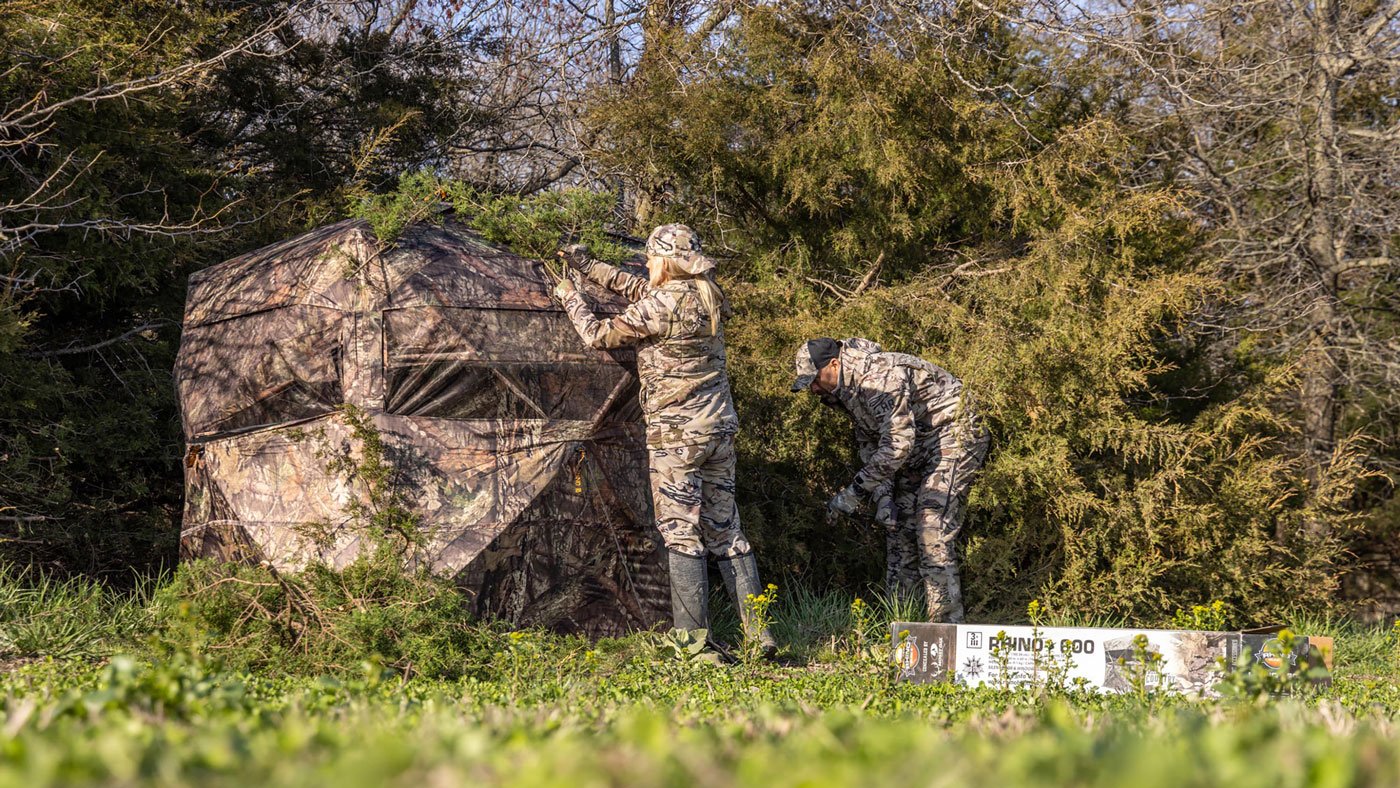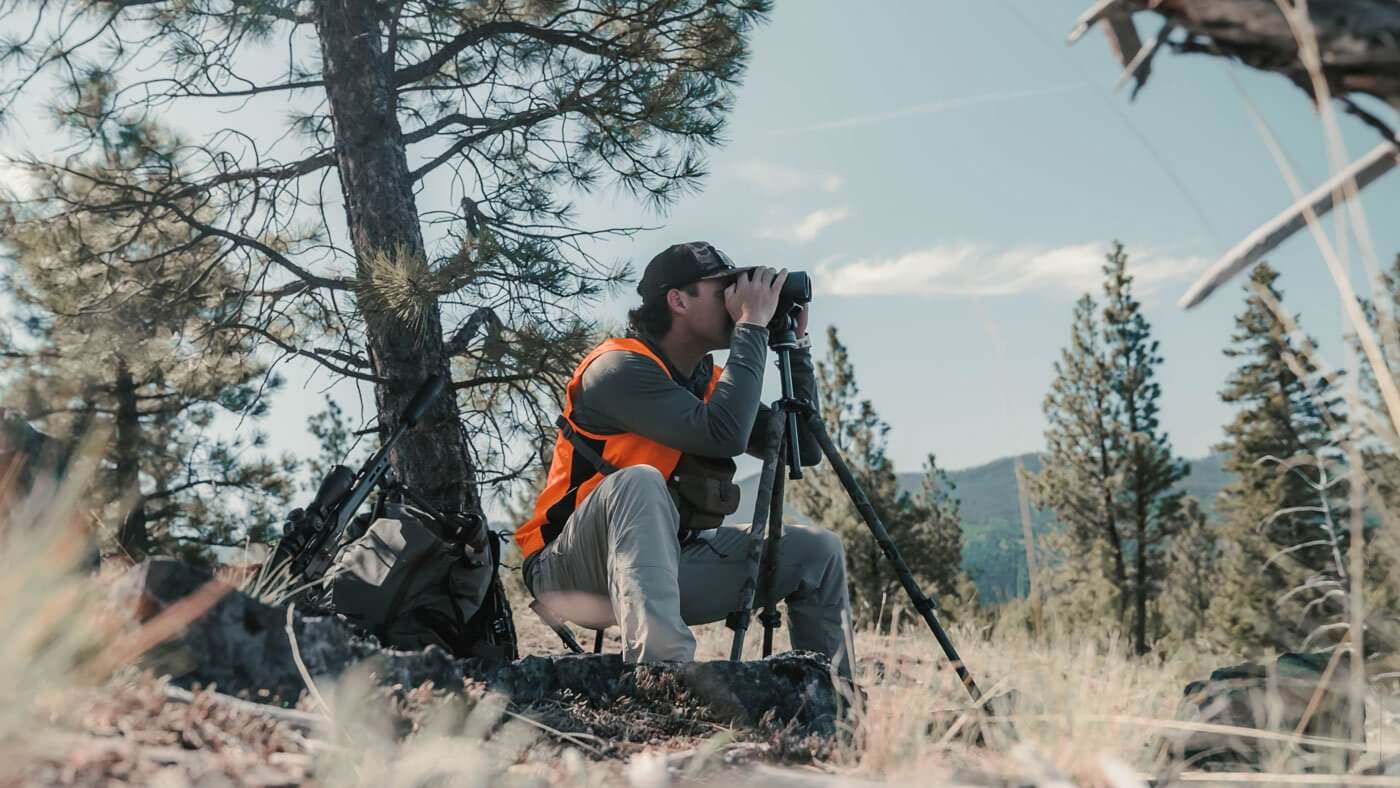- Savage Blog
- Summer Deer Season Prep for Fall Hunting
Summer Deer Season Prep for Fall Hunting

As the summer sun beats down and the woods are thick with green, many hunters are already looking ahead to cool fall mornings in the deer stand. The truth is, fall success often starts months earlier. A strong deer season prep routine during the dog days of summer can be the difference between filling your freezer and eating tag soup at the end of the season. From scouting and stand prep to property management, summertime is the perfect time to build the foundation of your strategy for fall.
Preparing Your Property
Before the season gets close and pressure ramps up, summer is the ideal time to get your hunting land in shape. A proactive approach to property management is one of the most important components of deer season prep, and it will also greatly help the health of your herd and attract more deer to your property.
Maintaining Food Plots
Food plots are much more than a set it and forget it option for supporting your deer herd. They require maintenance and care throughout the summer to help keep the plot healthy and provide maximum forage and nutrition for your deer. A few steps you can take are:
Mowing clover plots to keep them palatable. Deer prefer shorter, more tender clover shoots. Mowing should be done anywhere from two to four times during the summer as the plot grows.
Fertilizing as needed. Heavy rains and drought conditions can both lead to nutrient deficiencies in your plot. If needed, apply some fertilizer to help keep your plots healthy and growing.
Spot spraying weeds to reduce competition. If you start to spot weeds in your plot, apply a spot treatment of glyphosate or another weed killer to help manage the issue.
Overseeding your plots with fall and winter plot mixes. When the calendar turns to August and September, you can overseed your clover plots with a brassica mix or cereal grains to provide excellent deer forage that lasts into winter.

Cutting Access Trails
A hunt can quickly go awry with one wrong step that alerts deer to your presence. During the summer, you should focus on cutting trails that help you access your stand more easily and more quietly during the season. Here are some areas to focus on:
Cut trails that run along terrain features that can help hide your movement, such as creek bottoms, drainages, and along ridge slopes.
Focus on low-hanging branches, bushes, and small trees that are in your path that can create obstacles and cause noise.
Rake out debris and dead leaves from walking paths to help give you a little more stealth when heading to your stand.
Cutting Shooting Lanes
With foliage at its peak visibility during the summer, now is the best time to cut shooting lanes from your tree stands as a part of your deer season prep to ensure you have clear shots from your stand.
After hanging your stand, spend some time in it, noting your most likely shooting angles. Take into account nearby deer trails, food and water sources, and known travel corridors. Cut limbs back that obstruct your view of these paths.
If you’re sitting on the ground or in a ground blind, cut away any brush, small trees, and saplings that are obstructing your shooting lane or line of sight.
If you know deer are travelling through an area of thick cover, try to cut some small openings in the cover to provide shot opportunities from your blind or stand.
Summer Scouting
Effective deer season prep includes scouting—and lots of it. While you want to avoid over-pressuring deer, summertime scouting lays the foundation for your fall game plan by getting a good understanding of the land you are hunting and how it is being used.
Hanging Trail Cameras
Trail cameras are a quick, easy way to gather lots of information about how deer are moving and utilizing your property. If you have trail cameras, hang them in key areas that you expect deer to frequent often, such as deer trails, food and water sources, outside of bedding areas, and along travel corridors like field edges and ridge tops.
If you’re new to using trail cameras for deer season prep, check out our trail camera blog for everything you need to know about trail cameras and how to use them for deer hunting!

On the Ground Scouting
Walk your hunting areas carefully and look for deer sign in key areas. Check out known bedding areas, old rub lines, deer trails, and areas with food sources. During the summer, you will be looking for tracks and scat, but later in the year, closer to deer season, look for scrapes and rubs that indicate an increase in rut activity.
Move cautiously and slowly while scouting, and don’t push too deep into specific locations like bedding areas. Summer scouting is meant to be lower impact, so focus on making observations quietly and from a distance if needed.
E-Scouting
Hunting apps have become powerful tools for scouting a property year-round, whether it’s just down the road or three states away. You can use these digital tools, like HuntStand, onX, or Google Earth, to:
Mark stand locations and access routes to your stand, both of which can be crucial to know to make a game plan for how you will hunt your property during the season.
Identify terrain funnels and pinch points where you can place a trail camera, tree stand, or ground blind. Most of these tools also have topography layers that can help you identify ridges, drainages, valleys, knobs, and other key terrain features.
Note edge habitats, potential bedding cover, tree cover, and food and water sources to help narrow down areas that will hold deer consistently.
E-scouting is a valuable part of deer season prep, especially if you hunt multiple properties or public land. With these tools, you can always be scouting and take your knowledge of a property to a deeper level.

Preparing Your Stands
Summer is prime time for getting tree stands placed on your hunting property. Having your stands set up and ready to go helps deer acclimate to their presence well before the season, and it also helps in determining access routes and cutting shooting lanes.
Setting Ground Blinds
If you’re planning to set out a box blind or other permanent, hard-sided structure as a blind, summer is the best time to do it. This gives the deer in the area a few months to get used to the blind, and it also gives you time to get the blind set up and brushed in properly. Place your ground blind along field edges or clearings in the woods, and brush it in with fallen or cut tree limbs to help camouflage the blind even further.
For pop-up blinds, you should wait a little longer to place them. Placing pop-up blinds too early in the summer runs the risk of the blinds being damaged from storms, so place them around a month before the season starts to help deer get acclimated. You can brush in pop-up blinds to help conceal them further, but be mindful of sharp, pointed limbs that could tear the fabric.
Hanging Tree Stands
Hanging tree stands is one of the first things a deer hunter does during the summer. When you go to hang your stands, check your straps to ensure they are in good condition, inspect your stand for any rust or damage, and bring a friend or two to help put it up! If you have an existing stand in place, inspect it for damage and take note of the area its in to see if it needs to be move to a new spot.
When hanging and hunting out of tree stands, always keep safety in mind. Use a lifeline while in the stand, and never try to carry your rifle while you’re climbing up the stand. Use a rope tied to the top of your stand to secure your rifle and other items, and then bring them up when you’ve climbed into the stand. For more tips on tree stand hunting and tree stand safety, check out this blog!

More Land Management
Summer isn’t just about stands and scouting—land management is an essential part of year-round deer season prep that builds consistent deer movement across your property. Making your property more attractive to wildlife is the key to increasing your deer numbers and having a better chance at harvesting quality deer.
Mineral/Salt Licks
If legal in your state, mineral and salt licks provide a great source of nutrition and are a powerful attractant for deer during the summer months.
Salt licks and mineral licks can help deer with antler growth, providing key nutrients that nourish deer while they grow through the summer and prepare for the rut.
They keep deer active on your property during summer months, and can draw in deer from neighboring properties that you may otherwise not see.
Mineral licks are great for setting up in combination with trail cameras to scout the deer that are on your property and pick out target bucks for the upcoming season.
Use natural clearings for placing your blocks, or clear out a small clearing in a low-pressure area where deer will feel comfortable visiting. Always check your state and local wildlife regulations before placing mineral licks.
Setting Out Feeders
Feeders are excellent for supplementing your deer herd with high-quality food, where legal. Before placing feeders, check your local and state wildlife code for baiting rules and regulations.
Using timed-release feeders can help you control the quantity of feed used and give a predictable time for scouting and seeing wildlife.
Placing feeders in conjunction with trail cameras helps you easily monitor deer activity.
Keep feeders away from high-traffic areas, like roads, ag fields, and active pastures.
Watering Holes
Small manmade ponds or portable water tanks can be a huge draw in hot, dry months, especially if you’re hunting the southwest. A well-placed watering hole has many of the same benefits as a feeder or mineral lick, providing a great spot for camera scouting and providing vital water to help deer throughout the harsh summer months. If your property is lacking a water source, creating one can substantially help your habitat.

Bedding Cover
Thick, low-lying vegetation provides good bedding cover for does and bucks alike. Improve bedding areas by:
Hinge-cutting trees to create structure. Create these cuts by cutting almost all the way through a small tree a few feet above the base of the trunk. This will cause the tree to “hinge” at a 90-degree angle, which can provide screening cover for deer.
Leaving natural vegetation such as grasses and forbs untouched in select zones to create tall, thick areas where deer can bed. You can also broadcast switchgrass or other tall grasses to create bedding areas in old pastures and hay fields.
Limiting human activity near core bedding locations, especially as deer seasons draw closer. Take note of where multiple potential bedding are, and how they can change throughout the year. While deer may utilize hay fields or swamps in early fall, they will likely move to thick patches of cedar and fir trees during the winter for better thermal cover.
Public Land Prep
If you’re hunting public ground this season, your deer season prep will look a little different. You may not be able to manipulate the landscape, but you can outwork the competition with smart scouting and planning to find those hidden gems that others never even know are there.
Focus on Scouting
Since you're not planting food or setting up permanent stands, prioritize time spent:
Observing pressure zones. Find out which trails are heavily used, and avoid these areas when the season begins. Try to find deer trails and sign off the beaten path.
Noting hunter sign and access routes. If you know that one parking lot is the most popular, consider hunting the other end of the property that may be harder to get to.
Tracking deer movement trends year-over-year. Take notes on how deer utilize the property over the years. Playing the long game can pay off when it comes to public land.
Food Plot Locations
Many pieces of public land will have food plots planted by agency staff or local farmers. These plots are an excellent place to begin scouting. Specifically, look for:
Where deer are feeding. Are they utilizing a plot with a specific crop more than another? If you can, glass the field from a few hundred yards away to avoid bumping any nearby deer.
What time they are arriving. Are deer using the field more at dawn, dusk, or during the day?
How they’re entering and exiting fields. Take note of where the plot is in relation to potential bedding areas and water sources, and see how frequently deer are heading to or coming from those locations.
Glassing
Bring your binoculars or spotting scope, and watch from field edges, hill tops, or even the parking lot if it’s high up and has a good view of the property. Take note of both deer movement and habitat features that may hold deer throughout the season.

Success in the fall isn’t just about being in the right place at the right time—it’s about deer season prep that started months in advance. Whether you’re fine-tuning food plots on private land, glassing bean fields on public ground, or hanging new stands, every task you check off in the summer helps build confidence and readiness for fall.

